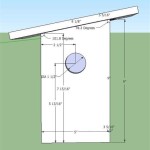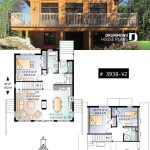Essential Aspects of River House Plans
Designing a river house requires meticulous planning to ensure both safety and the seamless integration of living spaces with the stunning natural surroundings. Consider these essential aspects when crafting your dream riverfront retreat:
1. Site Selection and Riverbank Stabilization
The location of your river house is paramount. Assess the river's flow patterns, floodplains, and erosion susceptibility. Choose a site that provides protection from flooding and allows for stable riverbank stabilization measures, such as riprap, retaining walls, or vegetation.
2. Floodplain Compliance and Elevation
Adhere strictly to local floodplain regulations to determine the minimum elevation for your house. This is crucial for ensuring safety during floods. Elevate the house above the floodplain level, considering both the current and projected future flood risks.
3. Foundation Design and Waterproofing
The foundation of a river house must be designed to withstand the forces of flowing water and potential flooding. Opt for durable materials like concrete or steel and consider incorporating a crawl space or elevated foundation to provide additional protection from water penetration.
4. Structural Design for Current and Future Conditions
The structural design should account for the potential impact of strong winds, flooding, and debris. Utilize sturdy materials, such as engineered lumber or steel, and incorporate wind-bracing systems to ensure the house's structural integrity.
5. Waterfront Access and Activities
Plan for convenient access to the riverfront from your house. Consider including a dock, boat ramp, or other features that enhance your enjoyment of the water. Designate areas for outdoor recreation, relaxation, and entertaining, such as decks, patios, or fire pits.
6. Environmentally Responsible Design
Emphasize sustainability in your design. Utilize energy-efficient construction methods, choose low-impact materials, and minimize the disturbance to the natural environment. Consider using native plants and rainwater harvesting systems to promote ecological harmony.
7. Inclusion of Natural Elements and Views
Maximize the connection to the river by incorporating large windows, balconies, or screened porches that offer panoramic views. Utilize natural light and materials, such as wood and stone, to enhance the indoor-outdoor transition and create a harmonious living space.
8. Flood Mitigation Plan
Develop a comprehensive flood mitigation plan in coordination with local authorities. Establish an evacuation route, store essential supplies, and consider installing flood-resistant materials and systems to minimize potential damage during floods.
9. Insurance Considerations
Obtain adequate insurance coverage to protect your river house from potential risks, including flood, wind, and fire. Review your policy regularly and make adjustments as necessary to ensure proper protection.

93 Best River House Plans Ideas

Ashley River House Coastal Plans From Home

27 River House Floor Plans Ideas

House Plan Saddle River Sater Design Collection

River Oaks House Plan Small Farmhouse

May River House

Wind River House Floor Plan Frank Betz Associates

House Plans The Rising River Cedar Homes

William E Poole Designs Santee River Inc

Rustic Mountain House Plan 3131 Fall River 3130








